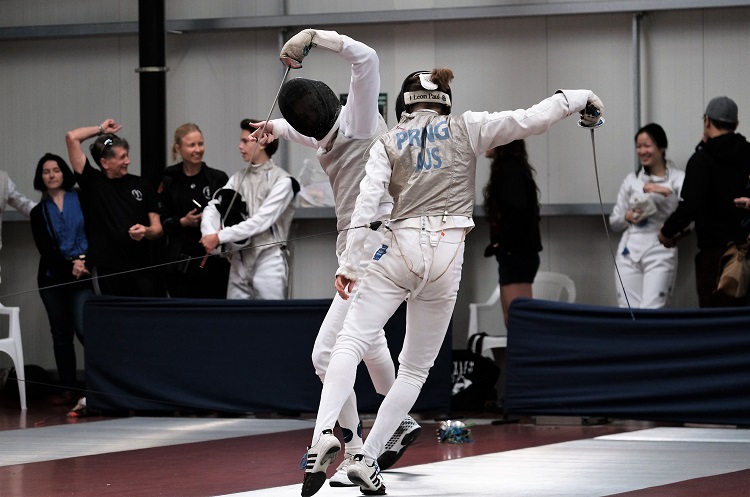Wedged against the window at 38,000 feet, I’m flying home after three days in Melbourne, where I wore my communications hat at the Junior National Fencing Championships.
The job has a wobbly definition. It doesn’t involve much writing. But I do a lot of listening, gathering personal stories and history. I also take a lot of photographs.
It’s exhausting work. My eyes are bloodshot and my hip aches. I don’t eat or drink enough because I’m too busy talking and snapping and uploading. Mostly talking.
Still, these tournaments are invigorating; an injection of sport to sustain my commitment to sports administration.
When not in the hall talking to athletes, coaches and parents, I sit with the tournament management team, uploading my images and preparing social media.
In that room, the timetable is paramount.
The team works hard to wrangle athletes, allocate referees and tally results. In quiet moments they might tackle some general administration, tinkering with the website and discussing policy. But ensuring the competitions run smoothly and efficiently is the main game.
With so many names and numbers and endless sheets of paper being shuffled across desks, it would be easy to lose sight of what these tournaments mean to the kids in the hall.
Even when I’m on the floor taking photographs, I’m at the tournament but not in it. I’m watching the drama, but I’m removed.
This weekend reminded me it’s critical to spend time in the bleachers and on the sidelines, immersed in the simmering tensions, talking to people to learn the backstories.
For some kids it’s the first time they’ve competed at a national competition. For others it’s their last year as a junior, a final opportunity to get their name etched on a trophy.
To a casual observer, both extremes look the same – eyes downcast, lips tight, hands clenched. But while the newcomers move about the hall self-consciously, the veterans own the place, claiming the best real estate like high-school seniors who finally get to sit on chairs at assembly.
When not competing, some strap on headphones and bury themselves in music, conserving energy and quelling nerves. Others skylark with friends and supporters, a show of nonchalance before their next bout.
They refuel with bananas and Tim Tams and guzzle litres of water. They sweat.
And behind every determined face is an individual story of courage and commitment, of hours spent training and planning, of choices and injuries and fears and desires.
Sometimes it’s only when they peel off their heavy protective gear at the end of the day, revealing bruises and blisters and strapping tape, that we get a hint of their personal journey.
The podium images capture this, with some silver medallists red-eyed and barely able to conceal their disappointment. And sometimes a bronze medallist beams the brightest smile, elated they made the podium at all.
A hundred stories make up the rich fabric of a three-day sporting tournament, and I can’t even scratch the surface of these from the office.
So, when I’m at a tournament, the challenge is to avoid the laptop’s lure and get amongst the action.
The writing can wait.


